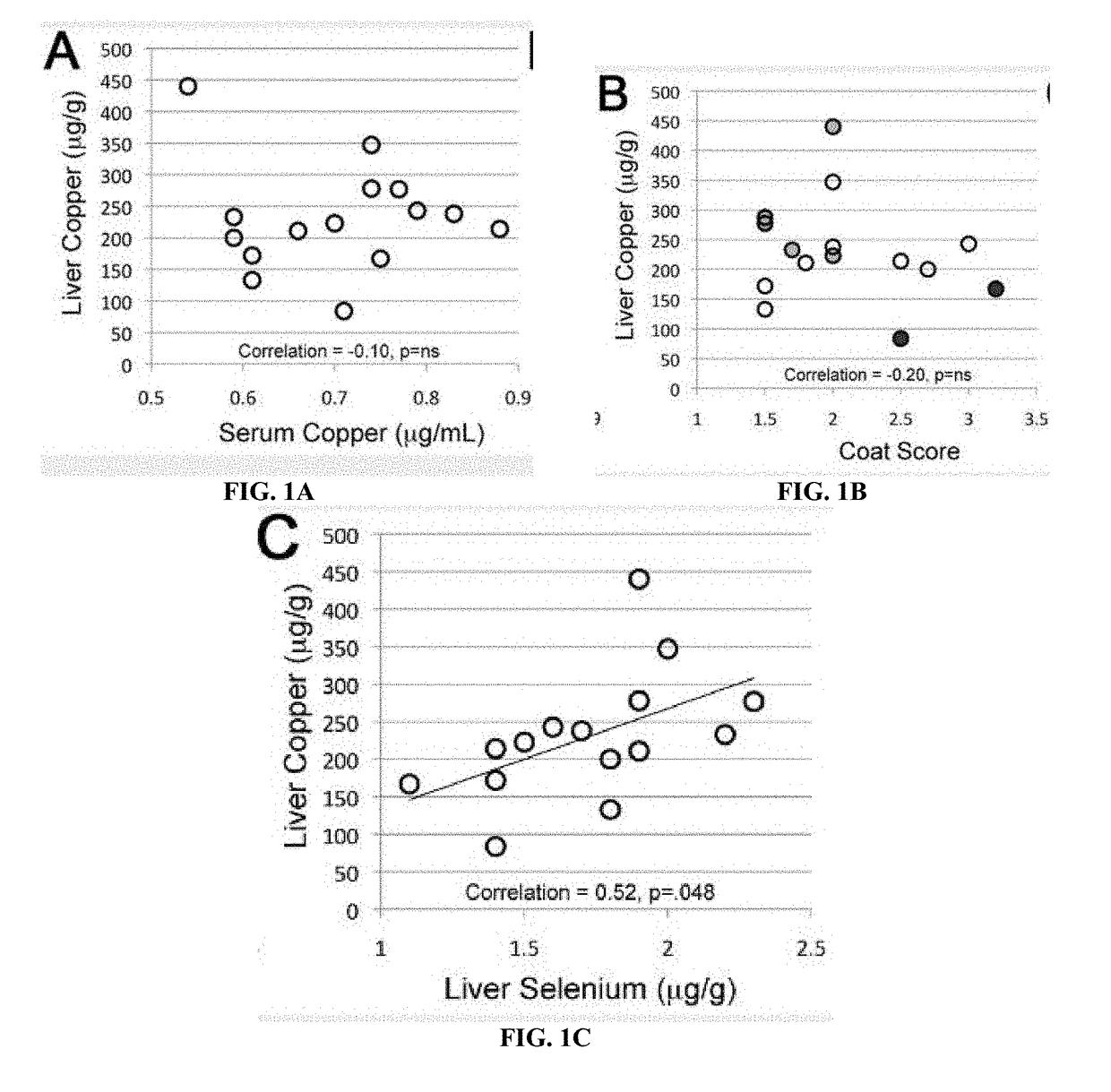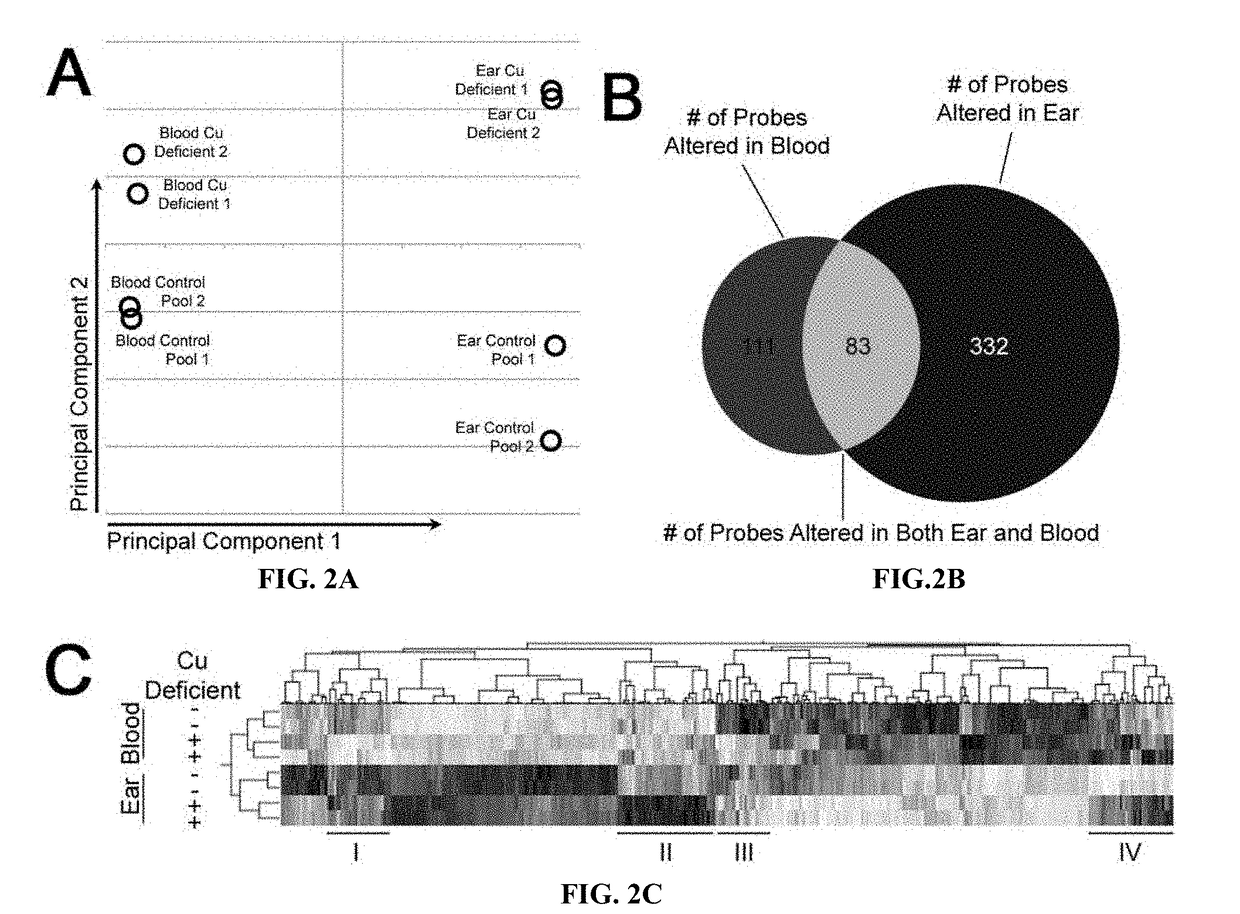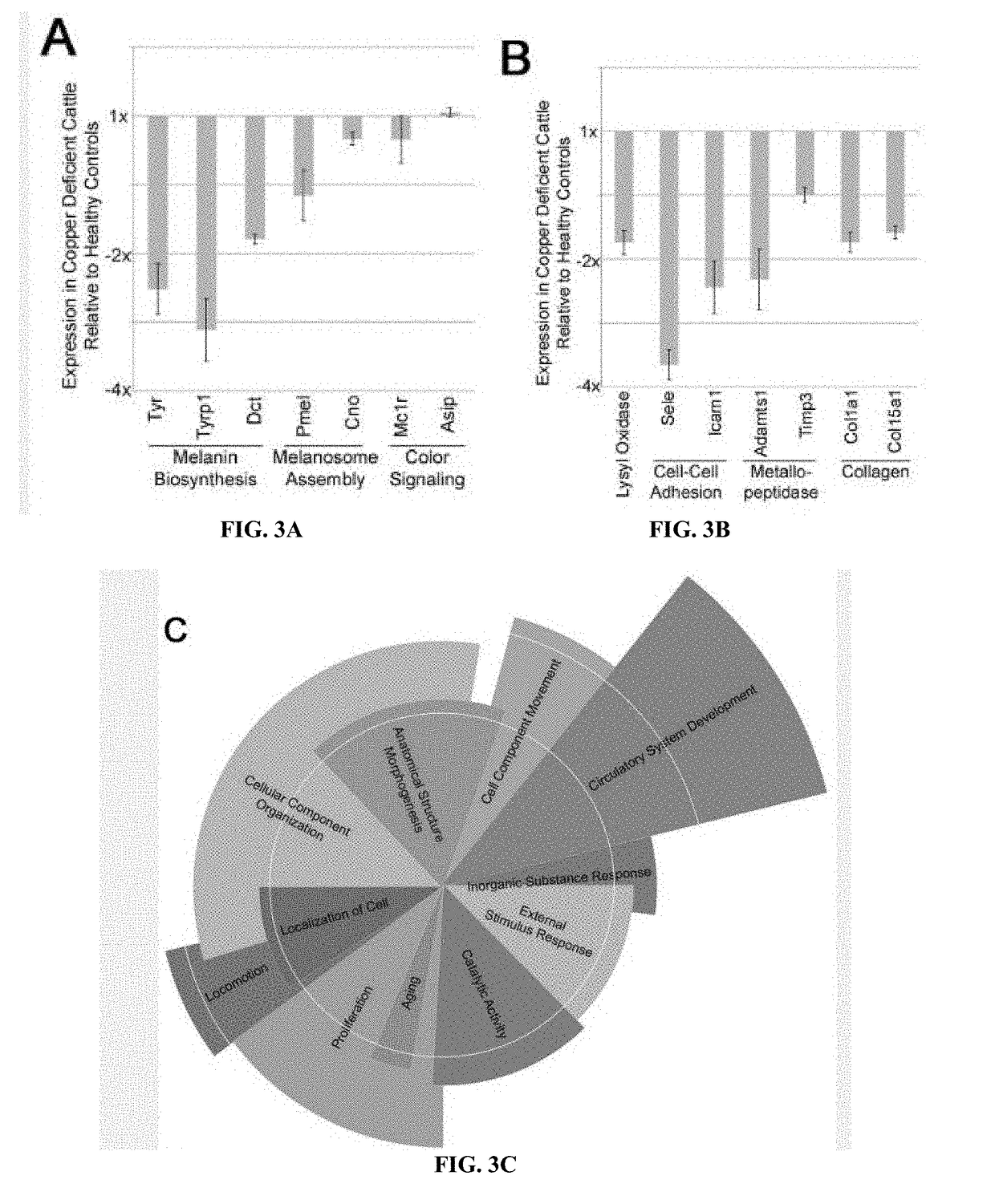Methods for predicting and reducing risk of copper deficiency in a ruminant subject or a ruminant herd
a technology of ruminant subjects and ruminants, applied in the field of prediction of coppery deficiency, can solve the problems of metal poisoning, significant morbidity and mortality, copper deficiency is a serious problem, etc., and achieve the effects of increasing the infection of fungal cells, and reducing the expression of tyrp
- Summary
- Abstract
- Description
- Claims
- Application Information
AI Technical Summary
Benefits of technology
Problems solved by technology
Method used
Image
Examples
examples
[0048]The studies described in this section relate to development and testing of an exemplary non-invasive or low-invasive method for assessing copper deficiency. Examples herein are directed to use gene expression arrays, and biological samples including skin and blood from copper deficient and control animals. Determination of whether the animals were copper deficient or control was made using the current gold-standard—liver biopsy.
Liver Copper Levels Do Not Correlate with Serum Copper Levels and Coat Scores.
[0049]In order to develop a non-invasive or low invasive test for copper deficiency, the present inventors assessed 15 cows from a herd previously known to have problems with copper deficiency. Coat scores were assessed, liver biopsies taken, blood drawn, and skin samples collected by ear punch. Liver and blood samples were sent to a commercial testing lab for levels of copper, cobalt, iron, manganese, molybdenum, selenium, and zinc (Table 1). RNA was isolated from whole homog...
PUM
| Property | Measurement | Unit |
|---|---|---|
| weights | aaaaa | aaaaa |
| weight | aaaaa | aaaaa |
| Heat map | aaaaa | aaaaa |
Abstract
Description
Claims
Application Information
 Login to View More
Login to View More - R&D
- Intellectual Property
- Life Sciences
- Materials
- Tech Scout
- Unparalleled Data Quality
- Higher Quality Content
- 60% Fewer Hallucinations
Browse by: Latest US Patents, China's latest patents, Technical Efficacy Thesaurus, Application Domain, Technology Topic, Popular Technical Reports.
© 2025 PatSnap. All rights reserved.Legal|Privacy policy|Modern Slavery Act Transparency Statement|Sitemap|About US| Contact US: help@patsnap.com



